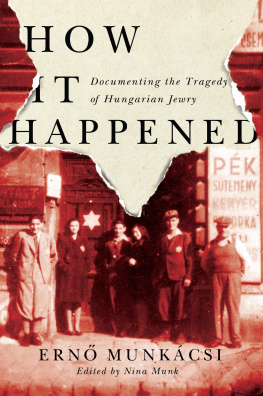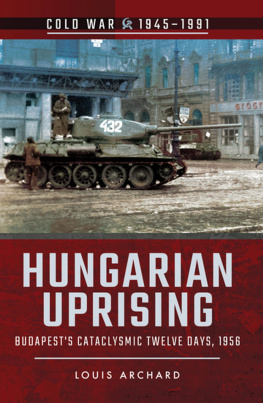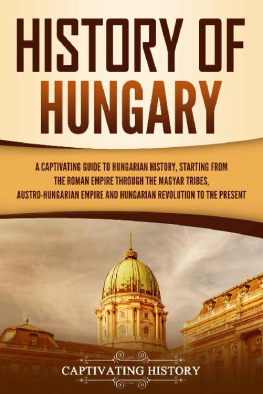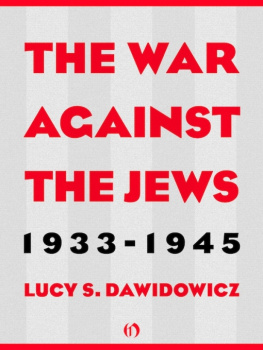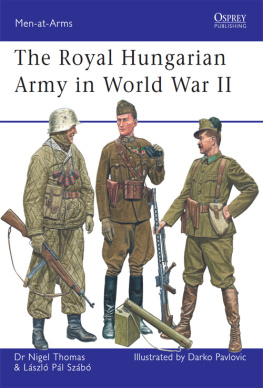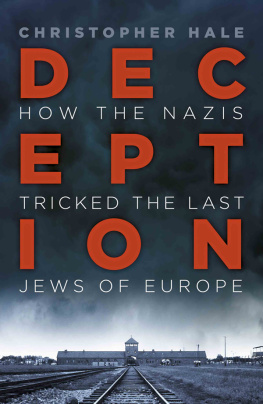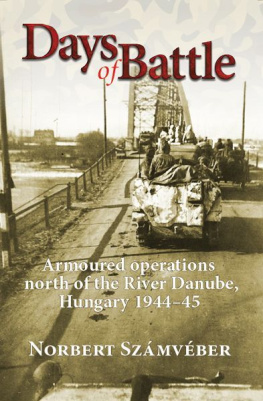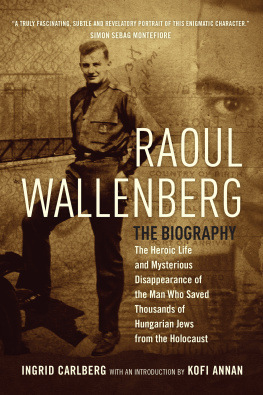
HOW IT HAPPENED

Fig. 1 Portrait of Ern Munkcsi, 1943
ERN MUNKCSI
HOW IT HAPPENED
Documenting the Tragedy of Hungarian Jewry
Translated from the Hungarian by Pter Balik Lengyel
Edited by Nina Munk
Annotated by Lszl Cssz and Ferenc Lacz
McGill-Queens University Press
Montreal & Kingston London Chicago
Nina Munk 2018
ISBN 978-0-7735-5512-9 (cloth)
ISBN 978-0-7735-5581-5 (ePDF)
ISBN 978-0-7735-5582-2 (ePUB)
Legal deposit fourth quarter 2018
Bibliothque nationale du Qubec
Printed in Canada on acid-free paper that is 100% ancient forest free (100% post-consumer recycled), processed chlorine free

We acknowledge the support of the Canada Council for the Arts, which last year invested $153 million to bring the arts to Canadians throughout the country.
Nous remercions le Conseil des arts du Canada de son soutien. Lan dernier, le Conseil a investi 153 millions de dollars pour mettre de lart dans la vie des Canadiennes et des Canadiens de tout le pays.
Library and Archives Canada Cataloguing in Publication
Munkcsi, Ern
[Hogyan trtnt? English]
How it happened : documenting the tragedy of Hungarian Jewry / Ern Munkcsi ; translated from Hungarian by Pter Balik Lengyel ; edited by Nina Munk ; annotated by Lszl Cssz and Ferenc Lacz.
Translation of: Hogyan trtnt?
Includes bibliographical references and index.
Issued in print and electronic formats.
ISBN 978-0-7735-5512-9 (cloth).ISBN 978-0-7735-5581-5 (ePDF).ISBN 978-0-7735-5582-2 (ePUB)
1. Holocaust, Jewish (19391945) Hungary Personal narratives.
I. Munk, Nina, editor II. Title: Hogyan trtnt? English
DS135.H9M8613 2018 | 943.9004924 | C2018-903578-1 C2018-903579-X |
This book was designed and typeset by Peggy & Co. Design Inc. in 10.5/14 Sabon.
Contents
Nina Munk
Ferenc Lacz
Susan M. Papp


Ferenc Lacz and Lszl Cssz
List of Illustrations
Fig.1 Ern Munkcsi, 1943
Estate of Magdalena and Alfred Gergely, courtesy of Andrew E. Hegedus
Fig.2 Ern Munkcsi at Peter Munks bar mitzvah, Budapest, 1940
Photo by Gyula Schffer Estate of Peter Munk
Fig.3 The girls gymnastics team at Budapests Jewish high school, 1941
Photo by Pl Kis Hungarian Jewish Museum and Archives
Fig.4 An Orthodox Jewish mother with her children, Mak, 1922
Photo by Nndor Homonnai Jzsef Attila Museum of Mak
Fig.5 Opening ceremony for the Hungarian Jewish Museum, Budapest, 1932
Hungarian Jewish Museum and Archives
Fig.6 Jen Vidas villa, Budapest, c. 1930
Estate of Jen Vida, courtesy of his grandchildren
Fig.7 The Jewish ghetto in Munkcs, 1944
Ghetto Fighters House Museum
Fig.8 Sndor and Berta Guttman with their children, Budapest, 1944
United States Holocaust Memorial Museum, courtesy of Irving and Emma Eisner
Fig.9 Jews in Dunaszerdahely herded onto a freight train to Auschwitz, 1944
Yad Vashem Photo Archive
Fig.10 Residents of Hajdnns plunder the towns ghetto, 1944
Hungarian Jewish Museum and Archives
Fig.11 Hungarian Jews arrive at Auschwitz-Birkenau, 1944
Yad Vashem Photo Archive, courtesy of the Hungarian National Museum
Fig.12 Sarah Stein and Adolf Munk, Nagyvrad, c. 1880
Hungarian Jewish Museum and Archives
Fig.13 Bernt Munkcsi with his Votyak instructors in Russia, 1885
Hungarian Jewish Museum and Archives
Fig.14 The Munkcsi family on holiday in Abazzia, 1915
Hungarian Jewish Museum and Archives
Fig.15 The synagogue of Gyngys, 1930
Photo by Lipt Baumhorn Hungarian Jewish Museum and Archives
Fig.16 Hungarian Jewish Museum general assembly, Budapest, 1930s
Hungarian Jewish Museum and Archives
Fig.17 va Kahns wedding party, Budapest, 1935
Photo by Gyula Schffler Hungarian Jewish Museum and Archives
Fig.18 Paula va and Maya Munkcsi, Budapest, 1933
Photo by Pl Kis Hungarian Jewish Museum and Archives
Fig.19 Pest Israelite Congregation general assembly, Budapest, 1930s
Photo by Sndor Diskay Hungarian Jewish Museum and Archives
Fig.20 Jewish inmates at Kistarcsa internment camp, 1944
Hungarian Film Office Hungarian National Museum
Fig.21 Women and children on arriving in Auschwitz, 1944
Yad Vashem Photo Archive
Fig.22 Gendarmes lead Jews in Kszeg to the train station, 1944
Photo by Jnos Babai Hungarian National Museum
Fig.23 A man with two boys in the Ungvr ghetto, 1944
Hungarian National Museum
Fig.24 A yellow-star house at 8 Vay dm Street, Budapest, 1944
Memorial Museum of Hungarian Speaking Jewry
Fig.25 The Glass House on Vadsz Street, Budapest, 1944
Photo by Carl Lutz United States Holocaust Memorial Museum, courtesy of Agnes Lutz Hirschi
Fig.26 German soldiers round up Jews in Budapest, 1944
Photo by Walther Faupel Bundesarchiv
Editors Preface
A few years ago, while rummaging through his desk drawers, my father, Peter Munk, found a tattered copy of a Hungarian book written in 1947 by his cousin Ern Munkcsi. My father sat down, read the book in one sitting, and called me. This book, he began urgently. It has to be published in English.
Leading scholars of the Holocaust in Hungary have long been influenced by Ern Munkcsis remarkable book of 1947. Notably, How It Happened served as a vital source for Randolph L. Brahams encyclopaedic The Politics of Genocide. But, as my father understood immediately, How It Happened is not only an important historical record of the Holocaust in Hungary; it is an extraordinary first-hand account of the atrocity, written by a privileged eyewitness and victim. Memoirs of war are almost always affected by hindsight bias. How It Happened was written right after the Second World War, when the wounds were still raw. That immediacy magnifies the horrors Munkcsi describes: the barrage of increasingly preposterous demands made by Adolf Eichmanns special operations unit in Budapest (Sondereinsatzkommando Eichmann); the complicity of the Hungarian authorities; the disagreements that unfolded behind closed doors among frantic members of the Hungarian Judenrat; the mind-numbing swiftness and barbarity with which hundreds of thousands of Hungarys Jews were rounded up, robbed of their property and civil rights, herded into ghettos, and murdered in Nazi concentration camps.
My father and Ern Munkcsi were first cousins once removed (my fathers grandfather was Munkcsis uncle). The Munk family was big and tightly knit and comfortably bourgeois. In Budapest in the years leading up to the war, family members gathered frequently at their local coffee house (Orszghz kvhz), at their synagogue on what was then Csky Street, and for Shabbat dinners at my great-grandfather Gbor Munks well-appointed apartment in Liptvros. Ern, born in 1896, was thirty-one years older than my father. My father, born in 1927, remembered his older cousin as serious, dutiful, and rather dull. By all accounts, Ern was all that and more. He was a member of Budapests Jewish intelligentsia, a highly respected jurist, cultured, and committed to doing right by his community. As Susan Papp argues in her biographical essay (page lvii), by acting as secretary for the Judenrat or Jewish Council, Ern Munkcsi surely believed he could act as a bulwark against the Nazis.
Next page
